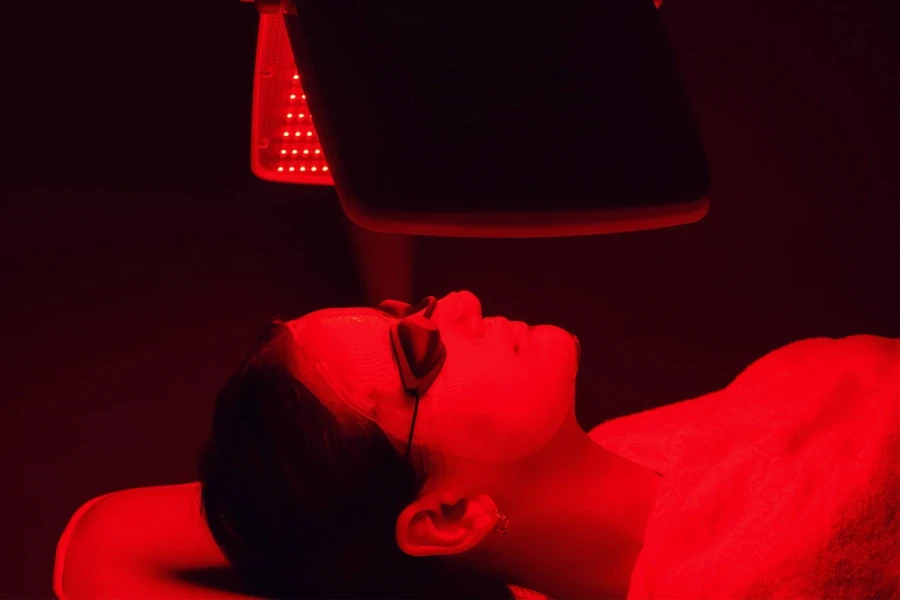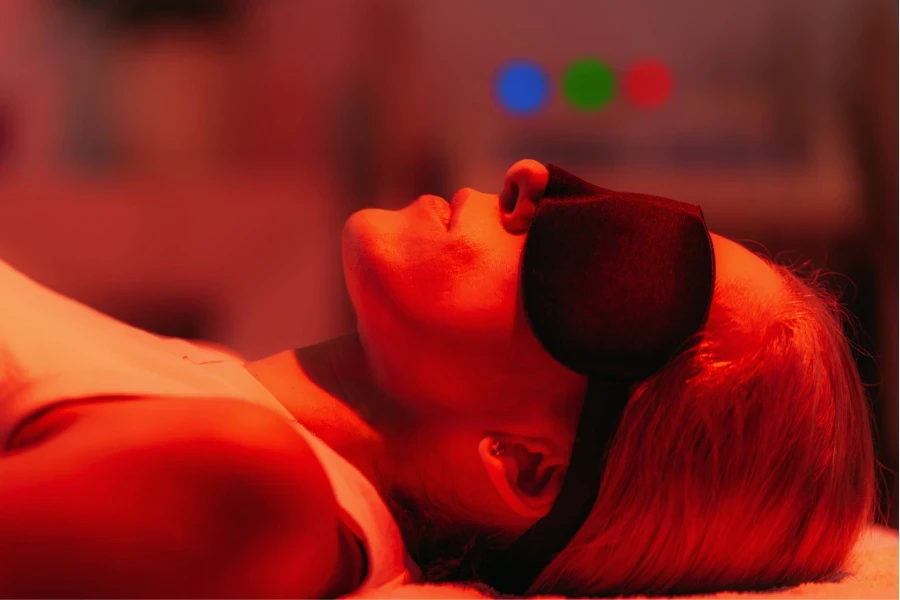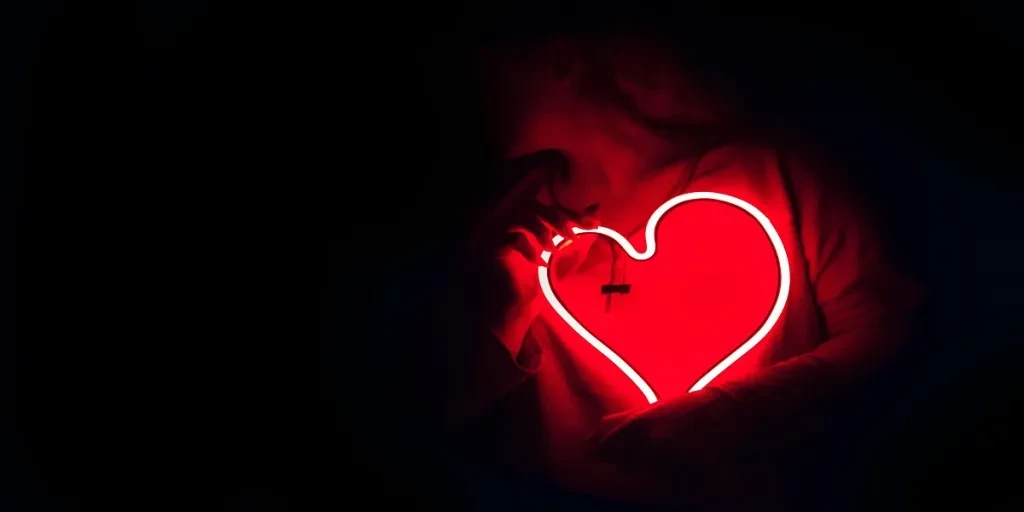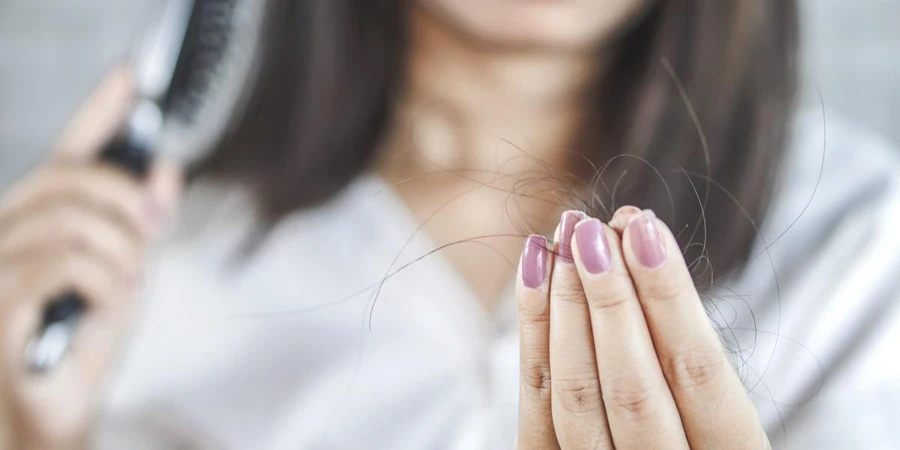Many experts have thoroughly researched red light therapy for its effects on wound healing, hair growth, hormone balance, sun damage, and other skincare benefits, and the results look promising.
In truth, these potential benefits have led to the introduction of various red light therapy machines. These tools have also gained popularity (a 20% search interest boost from 246,000 in October to 301,000 in November 2023) in a market filled with supplements, herbal extracts, and alternative beauty equipment.
This article will explore red light therapy machines and how sellers can choose profitable ones for their niche in 2024.
Table of Contents
Understanding the concept of red light therapy
5 factors to consider when choosing red light therapy machines
Last words
Understanding the concept of red light therapy

Red light therapy is an emerging non-invasive cosmetic treatment that utilizes low-wavelength red light to enhance the user’s skin appearance. It helps to reduce acne, scars, wrinkles, redness, and other medical conditions.
Initially, NASA explored red light therapy for promoting plant growth in space and helping to heal astronaut-related wounds. But like other advancements, research expanded into exploring additional potential applications, like skin care.
The idea behind red light therapy is to impact mitochondria, often called the “powerhouse” within the body’s cells. Providing more energy enables other cells to function more effectively, including repairing skin, promoting new cell growth, and enhancing skin rejuvenation.
In other words, red light therapy allows specific cells to absorb the light wavelengths, stimulating them to perform their functions. Remember that no evidence supports RLT’s effectiveness, but it’s been gaining enough attention to warrant multiple beauty devices flooding the market.
5 factors to consider when choosing red light therapy machines

1. Red, near-infrared, or combo?
Usually, businesses can choose between three types of red light therapy machines: red light, near-infrared light, and a combination of both. Some people often mistake them for the same thing, but these light types differ despite their similarities.
For instance, infrared light is not visible to the human eye. Instead, users will feel heat on their skin, with longer wavelengths penetrating deep into the cells. Conversely, red light is visible because it has shorter wavelengths.
Also, red light can’t get deeply into the skin, so most consumers use it to treat the skin’s surface. For this reason, red light units are the go-to for combating surface issues like acne, wound healing, sunburns, yeast infections, and hair loss.
Since near-infrared light can penetrate three times deeper than red light, it extends these benefits to the muscles, joints, and bones. So, such units are perfect for consumers searching for something more intense than surface skin issues.
However, if consumers want skin surface and deeper tissue treatments but only want one device, businesses can offer them combo units—manufacturers design them to meet a wider range of requirements.
2. Optimal wavelength
Remember that science measures light in nanometers (nm) based on wavelength. Typically, red light falls between 600 and 700 nm, which is visible and bright. On the other hand, infrared or near-infrared light falls in the 700–900 nm range, which isn’t visible to the naked eye.
Studies indicate that light wavelengths between 660 and 670 nm and 830 and 850 nm significantly impact cellular respiration while offering the highest light absorption level.
Opting for red light therapy machines that can deliver these optimal wavelength ranges will offer consumers maximum benefits for their skin health.
3. Light intensity & irradiance
These two factors work hand-in-hand to ensure red light machines offer maximum effectiveness. Light irradiance represents the unit’s power density, signifying the quantity of energy reaching the user’s skin. This measurement is expressed in milliwatts per square centimeter (mW/cm2), indicating the amount of photons flowing through an area and absorbable by the cells.
While irradiance is important, it would mean nothing without the right intensity. A low-powered unit won’t be able to generate sufficient red light energy for the necessary irradiance, meaning consumers won’t get the maximum benefit.
But when the light is more intense, the user can absorb it in less time, providing a more efficient therapy session. Check the table below for the different irradiance levels and light intensity needed to generate it.
| Wavelength | Irradiance | Light intensity/power (megawatts) |
| 630 nm | 10 mW/cm2 | 100 to 300 mW |
| 660 nm | 20 mW/cm2 | 200 to 600 mW |
| 670 nm | 30 mW/cm2 | 300 to 900 mW |
| 700 nm | 40 mW/cm2 | 400 to 1200 mW |
| 810 nm | 50 mW/cm2 | 500 to 1500 mW |
| 850 nm | 60 mW/cm2 | 600 to 1800 mW |
4. Total number of LEDs
Bigger red light therapy devices with more LEDs are the most effective as they shorten treatment time. More LEDs mean more red and near-infrared light than devices with fewer bulbs.
In simple terms, the more LED bulbs, the better the device. Here’s a breakdown of the different number of LEDs and their effectiveness.
| Number of LEDs | Device type | Effectiveness |
| 2 to 10 | Small, handheld devices | Limited effectiveness for larger areas but more suitable for spot treatment. |
| 10 to 30 | Medium-sized handheld or facial masks. | More effective than small devices and great for targeting specific areas or the face. |
| 30 to 100 | Large panels or mats | Highly effective for treating larger areas like the back, legs, or torso. |
| 100+ | Full-body suits and beds | Most effective for treating larger areas and multiple body parts simultaneously. |
Note: These are only average values. The actual number of LEDs depends on the manufacturer. Some devices can contain 1,800 bulbs, while others can go as high as 10,500 LEDs.
5. Treatment coverage area
Will the treatment be for the whole body or only the face? While many consumers may opt for smaller devices to treat stretch marks, wrinkles, and other aging signs, others may shift toward bigger ones to maximize the red light therapy for hair loss, joint pain, muscle recovery, and hormone balance.
Consumers with flexible budgets will see red light therapy machines with maximum coverage as a better investment. These larger devices, like panels and beds, will generate more energy and perform better than smaller ones.
But don’t throw away the thought of smaller devices. Models like handheld wands and masks are portable and lightweight, allowing consumers to take them on trips—so these devices are the better option for target consumers who want to access red light therapy anywhere, anytime.
Last words
With technology advancing beyond what most people expect, new ways to enhance the skin are popping up—and red light therapy machines are topping the list.
Originally explored to help plant growth and promote quick healing, this light technology quickly made a name for itself in the cosmetic industry. Now, various devices, like wands, beds, and handheld variants, are available to give consumers a rejuvenating experience.
However, before grabbing this market’s various opportunities, businesses must consider the factors discussed in this article. It’ll ensure sellers only choose the ones that resonate with their target audience for more sales.








